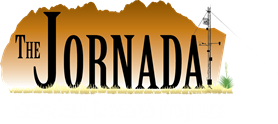| Title | Indicators and benchmarks for wind erosion monitoring, assessment and management |
| Publication Type | Journal Article |
| Year of Publication | 2020 |
| Authors | Webb N, Kachergis E, Miller SW, McCord S, Bestelmeyer BT, Brown JR, Chappell A., Edwards B, Herrick JE, Karl JW, Leys J, Metz L, Smarik S, Tatarko J, Van Zee J, Zwicke G. |
| Journal | Ecological Indicators |
| Volume | 110 |
| Issue | 105881 |
| Date Published | 01/10/2020 |
| ARIS Log Number | 367120 |
| Keywords | adaptive management, aeolian, Air quality, dust, ecological thresholds, Reference site |
| Abstract | Wind erosion and blowing dust threaten food security, human health and ecosystem services across global drylands. Monitoring wind erosion is needed to inform management, with explicit monitoring objectives being critical for interpreting and translating monitoring information into management actions. Monitoring objectives should establish quantitative guidelines for determining the relationship of wind erosion indicators to management benchmarks that reflect tolerable erosion and dust production levels considering impacts to, for example, ecosystem processes, species, agricultural production systems and human well-being. Here we: 1) critically review indicators of wind erosion and blowing dust that are currently available to practitioners; and 2) describe approaches for establishing benchmarks to support wind erosion assessments and management. We find that while numerous indicators are available for monitoring wind erosion, only a subset have been used routinely and most monitoring efforts have focused on air quality impacts of dust. Indicators need to be related to the causal soil and vegetation controls in eroding areas to directly inform management. There is great potential to use regional standardized soil and vegetation monitoring datasets, remote sensing and models to provide new information on wind erosion across landscapes. We identify best practices for establishing benchmarks for these indicators based on experimental studies, mechanistic and empirical models, and distributions of indicator values obtained from monitoring data at historic or existing reference sites. The approaches to establishing benchmarks described here have enduring utility as monitoring technologies change and enable managers to evaluate co-benefits and potential trade-offs among ecosystem services as affected by wind erosion management. |
| URL | files/bibliography/20-001.pdf |
| DOI | 10.1016/j.ecolind.2019.105881 |


